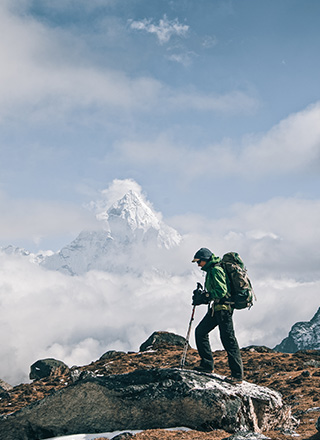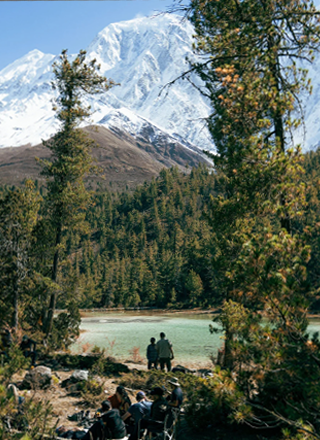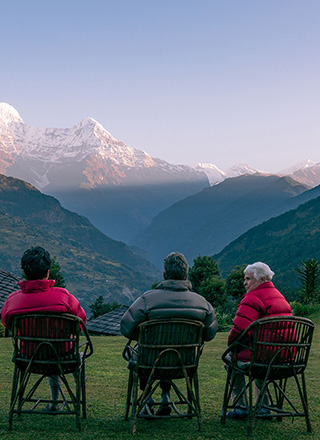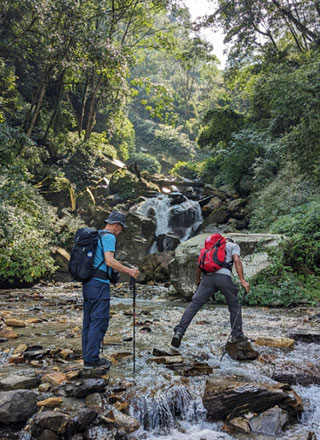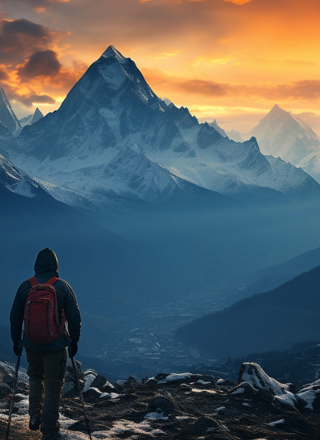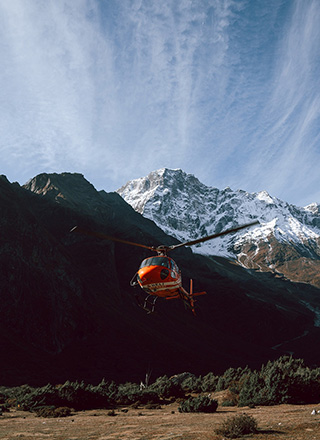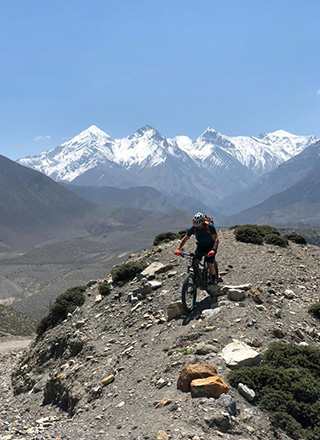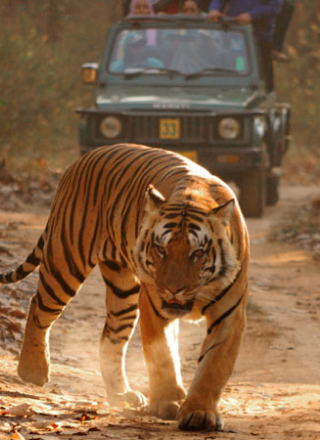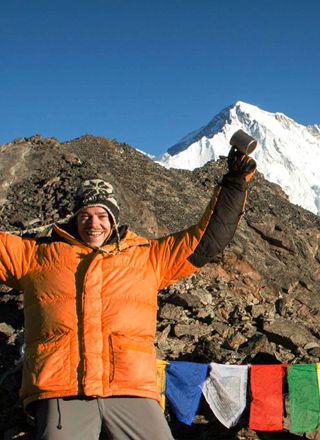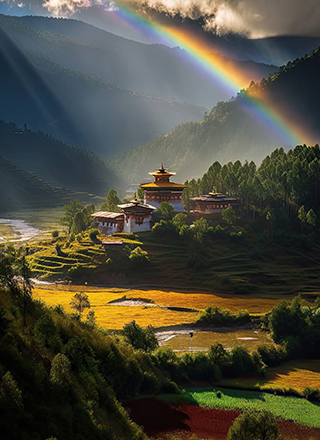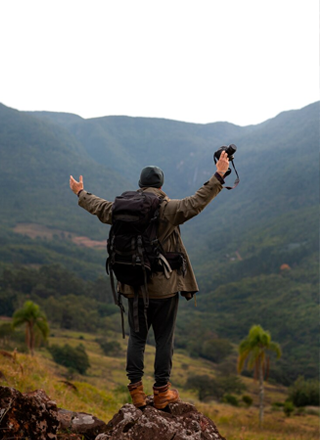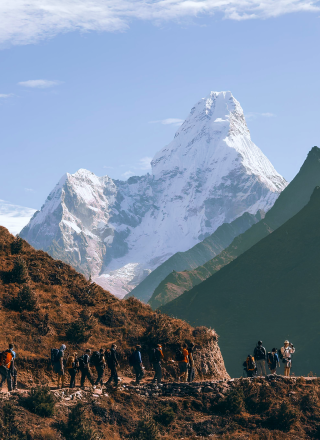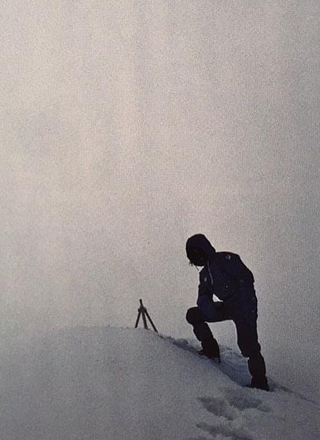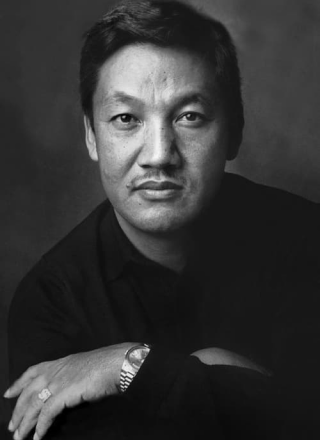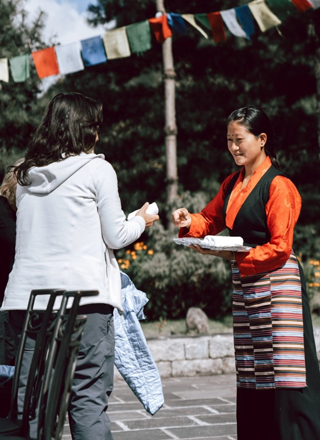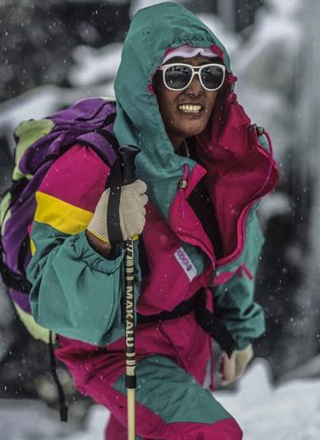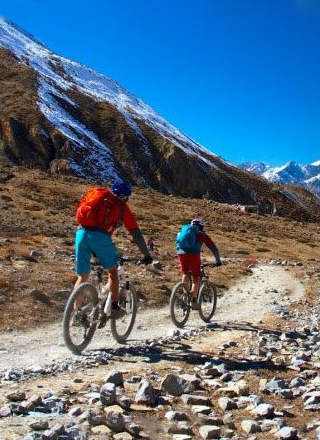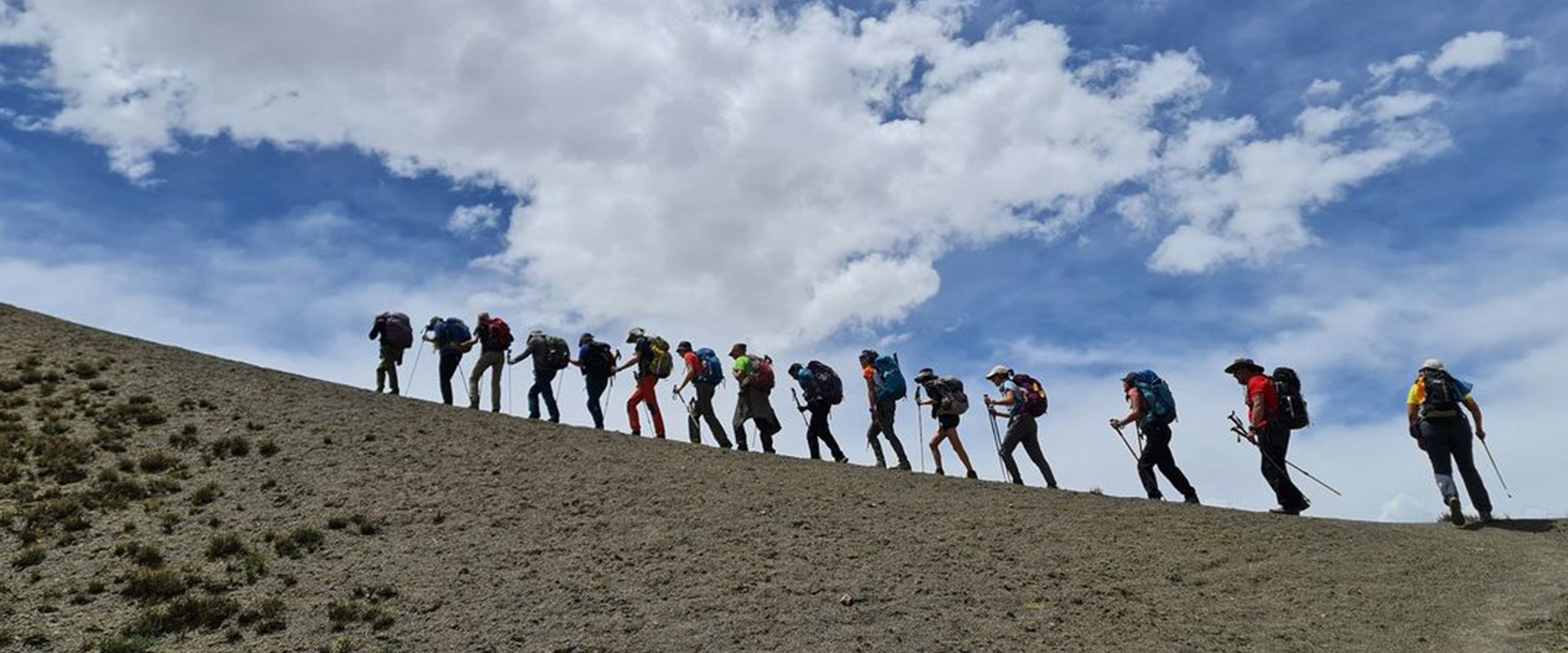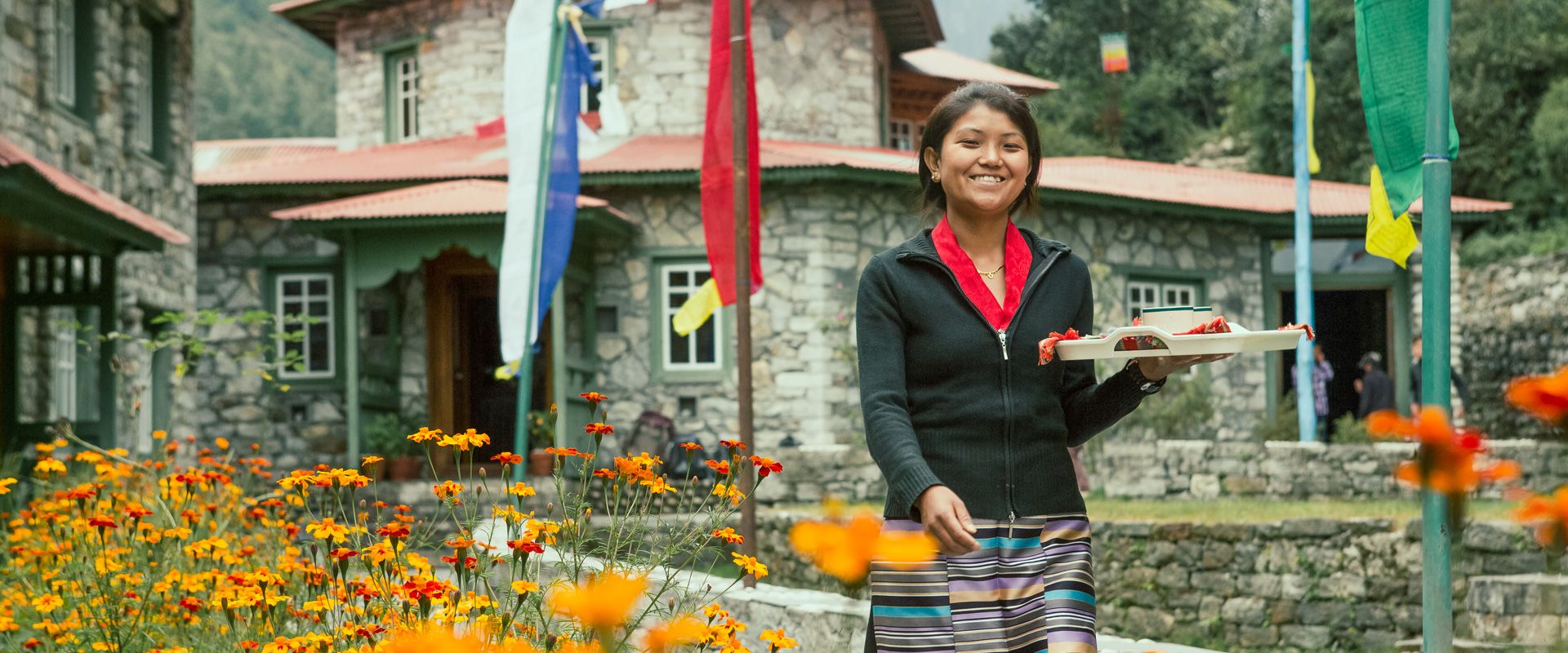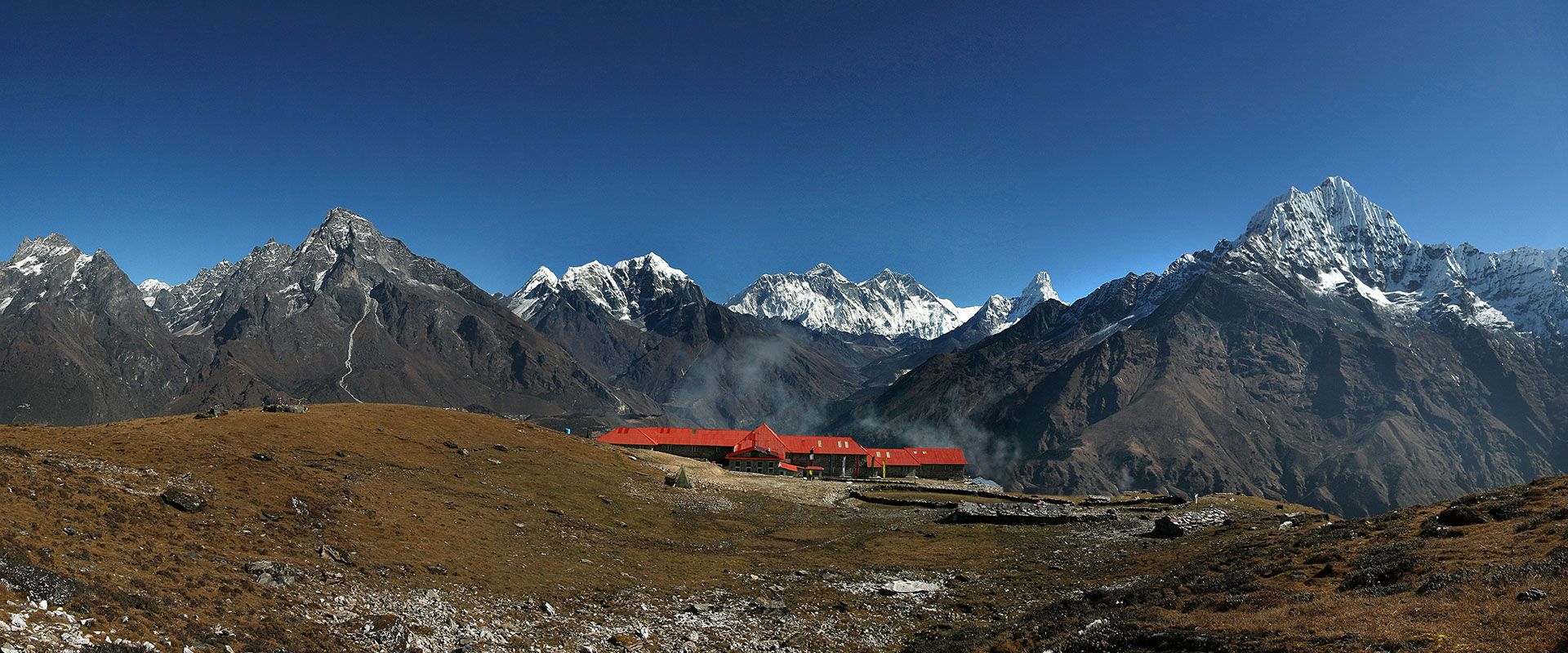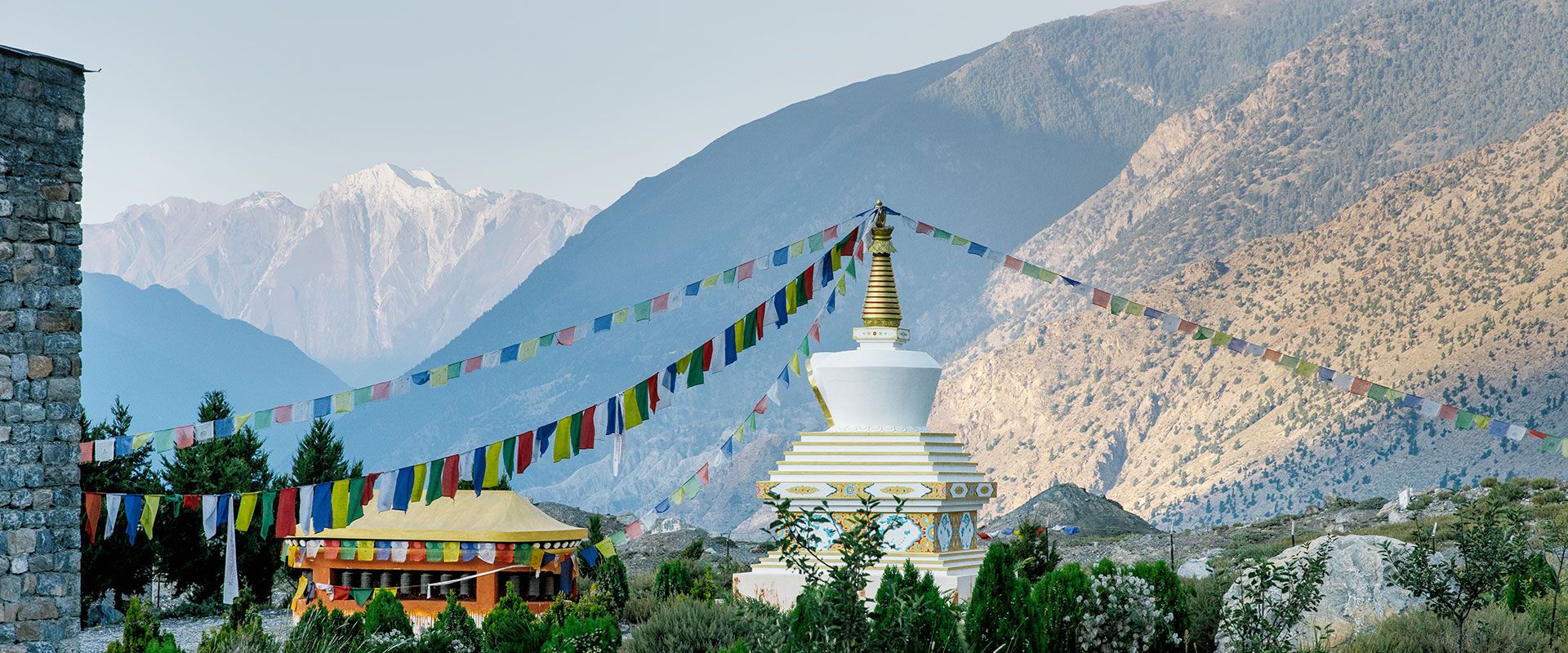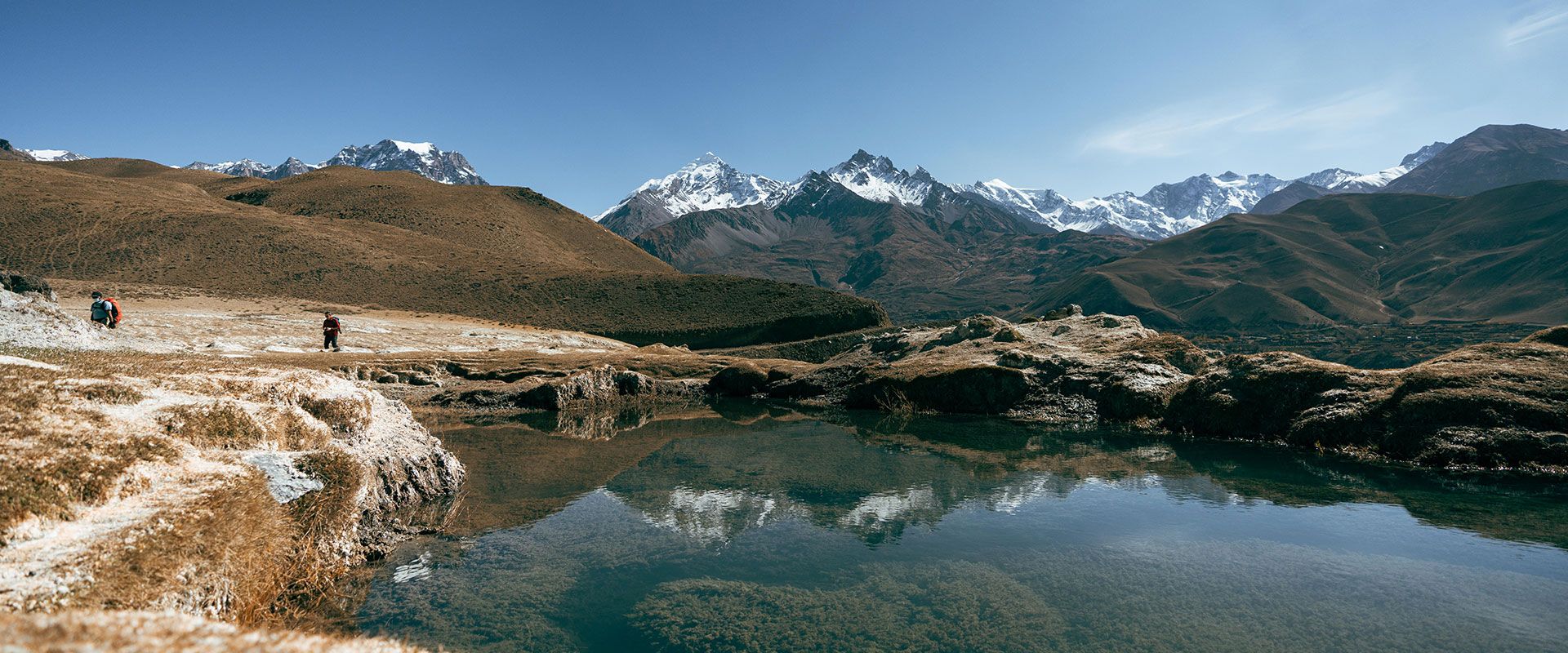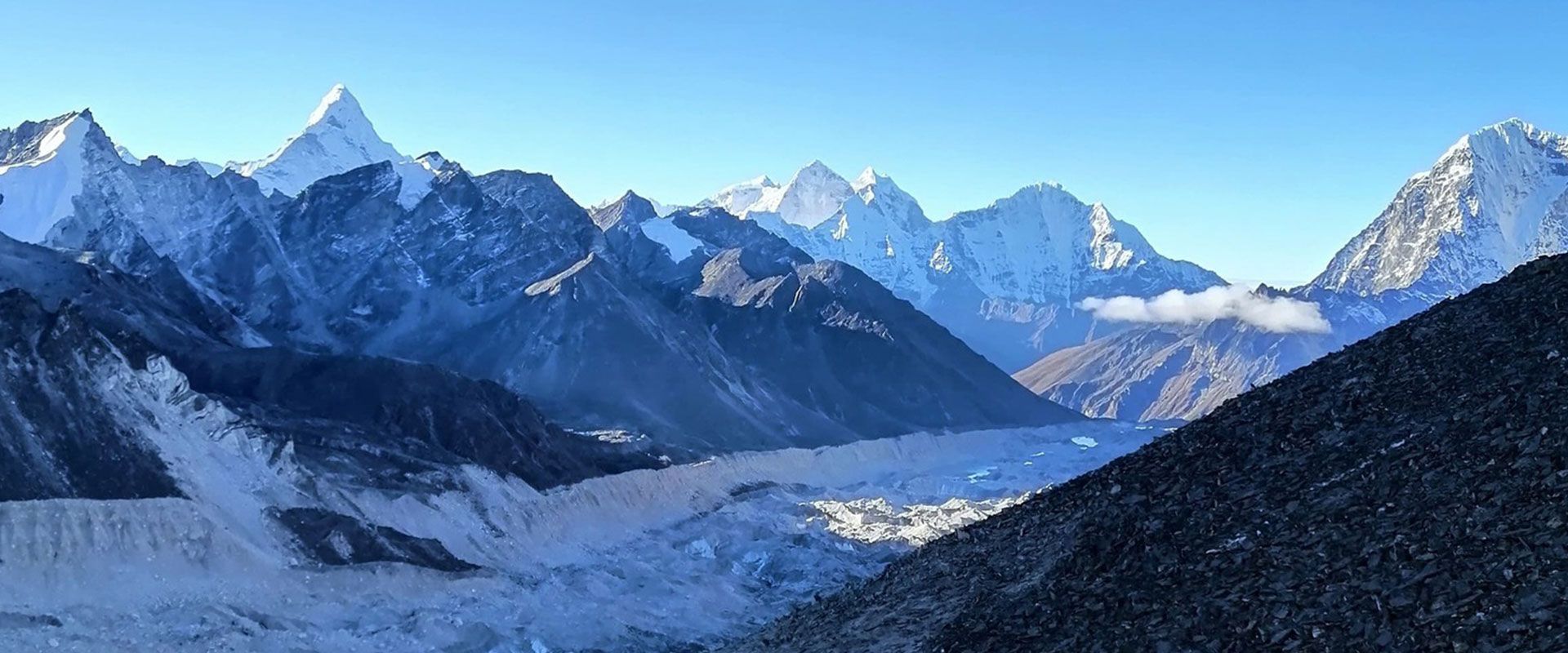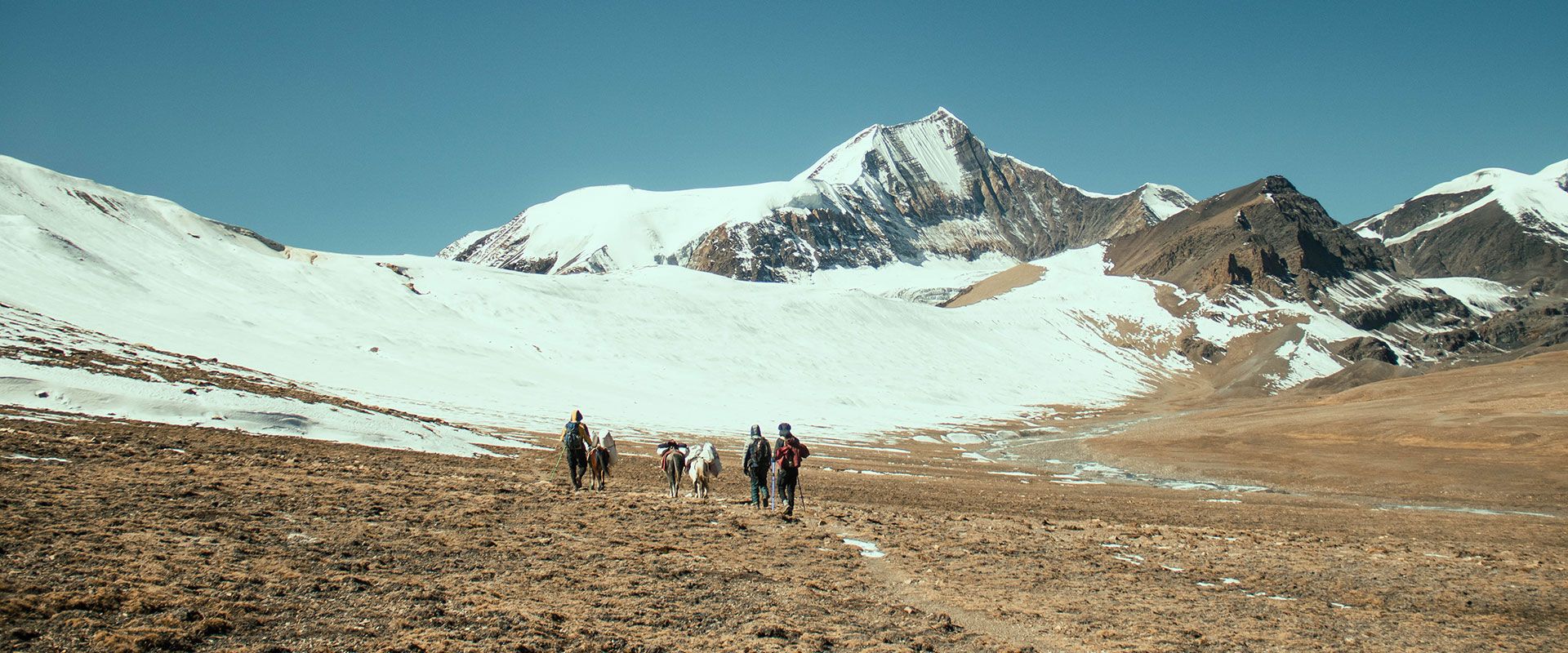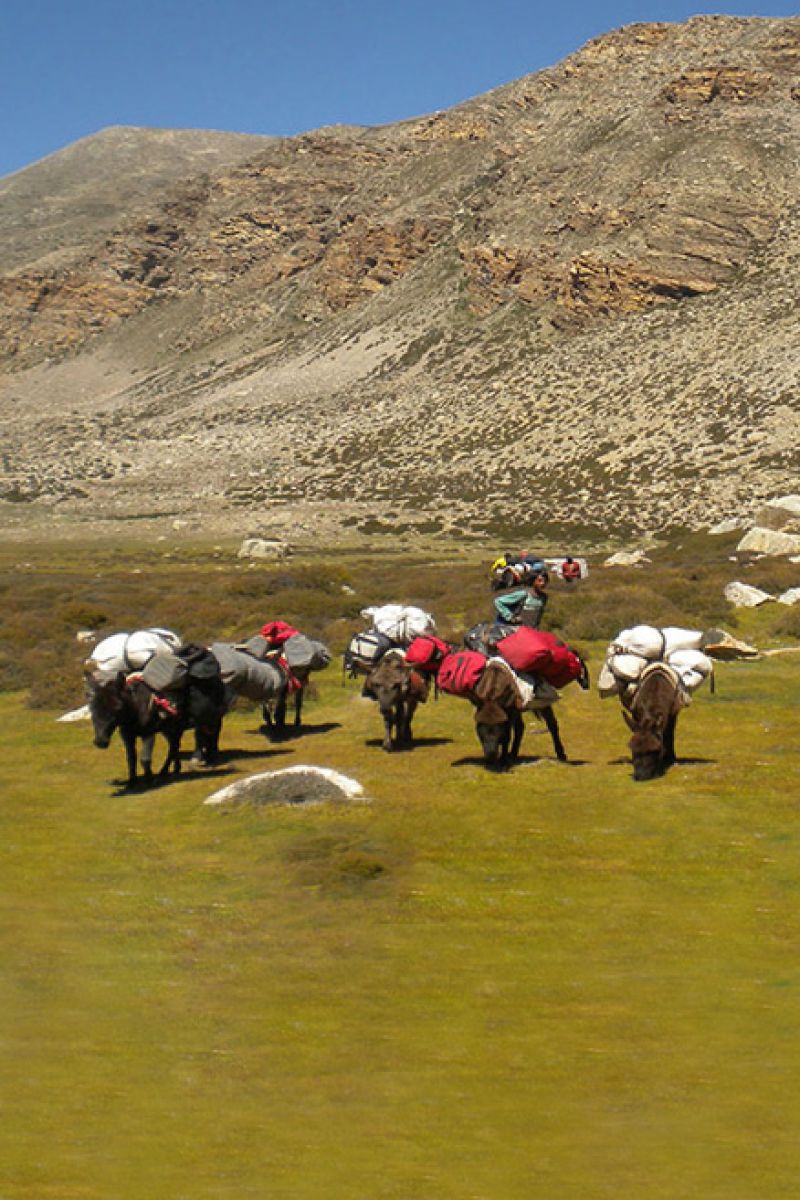- Travel Styles
- Destinations
- Signature & Charity Treks
- Special Project
- About Us
- Contact Us
26 days
25 Nights
Makalu Sherpani Col Trek
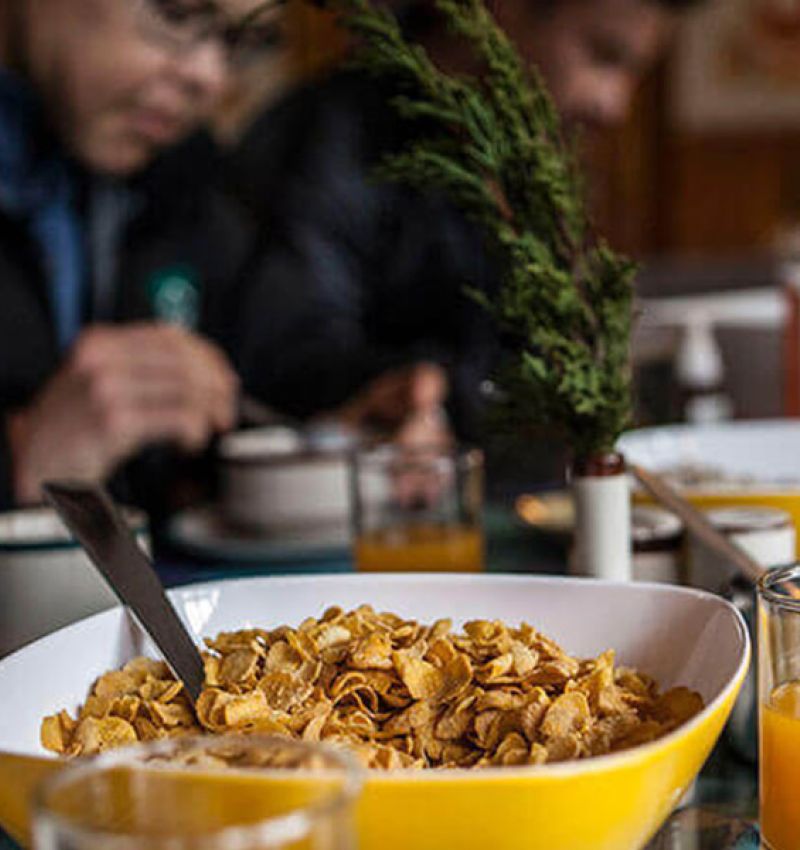
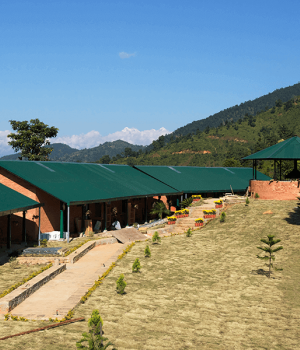
OVERVIEW
Makalu trek: three passes, cultural diversity
Makalu Sherpani Col trek lies in the eastern part of Nepal in the scenic Makalu Barun National Park and conservation area and falls in one of the route of the Great Himalaya Trail.
Due to the challenging nature of the trek that includes 3 passes such as Sherpani Col Pass (6135m), West Col (6143m) and Amphulaptsa (5850m) the trek recommended for those with lot of trekking experience.
The trek goes through diverse landscape and interesting cultures of Rai, Gurung, Magar, Chettris, Tamang and Sherpas passing through beautiful forest, floras and fauna. Since most of the places in this region has limited tea house which is why camping is highly recommended in the region.
Trip Overview
Destination
Region:
Activity:
Max. Altitude:
Type:
Group size:
Difficulty:
Highlights
- Visit Everest Base Camp (5364m) from where all the major expedition starts.
- Views of Island peak, Lhotse, Ama Dablam are the major part which encloses the panoramic view.
- Experience staying in a mountain tea houses will help to relax our mind and soul
- Visit village of Khumjung the school which has been established by Sir Edmund Hillary
ITINERARY
TAILORED TRIP FOR YOU
Arrival in Kathmandu
Depending on your arrival time, our representative will be at the airport to receive you and transfer you to your booked hotel.
Sightseeing in Kathmandu
The program will be – the Patan and Bhaktapur Durbar Square monuments with their wooden pagoda-temples, the Boudhanath or Swoyambhunath’s Buddhist sanctuaries and Pashupatinath Hinduist one where the cremations occur, not to speak of the many temples spread about along the crowded and busy streets of the antique city.
Meals: B
Fly to Tumlingtar (400m) – 50 Minutes Flight
After breakfast we drive to the domestic airport in Kathmandu for a 50 minutes flight to Tumlingtar where our staff will be waiting for us. We then drive to our hotel for tonight.
Meals: BLD
Trek to Khadbari (1040m)
The trail becomes a ridge walk to Khadbari. Leaving Tumlingtar the trail will go upstream the Arun Kosi river for several days, with a path sometimes overlooking the deep gorges. Leaving the extensive plateau of Tumlingtar, the trail begins a long ascent up the ridge between the Arun river and the Sabha Khola.
Meals: BLD
Khadbari – Bhote Bas (1740m)
Past Mani Bhanjyang the trail makes a gentle climb through terraced fields, past a paper factory at Panguma. Then it continues through fields, bamboo groves and big rocks to Shekla before climbing to the Tamang village of Bhote Bas.
Meals: BLD
Bhote Bas – Gogone
The trail climbs to a pass at 1850m that offers a spectacular view of Chamlang, Makalu and Jaljale Himal. Then it descends a bit to the next ridge, follows the crest as it makes some ups and downs through a rhododendron forest. The cultivated fields disappear as the trail climbs to a pass at 1850m that offers a spectacular view of Chhamlang, Makalu and Jaljale Himal.
Meals: BLD
Gogone – Num (1490m)
The trail goes through forests of huge rhododendrons then below Mure passes many tracts of burned trees. Drop to Num on a large and well marked trail across these villages, a good trail was traditionally leading to near Tibet. Inhabitants were exchanging rice and grain from the south valleys against the salt from the big salty Tibetan lakes.
Meals: BLD
Num – Seduwa (1460m)
At Num, we leave that main trail for another one going down and crossing the Arun River. We are at only 1000m height level. From here, we have to go upstream a steep trail alongside the opposite bank around Seduwa.
Meals: BLD
Seduwa – Tashi Gaon (2070m)
The trail makes a gradual climb high above the Kasuwa Khola to Gyang at 1770m. Past the school it is a gentle walk through forested areas and terraced fields on to Rupisa. The route crosses meadows and several streams, then climbs to the Sherpa village of Tashi Gaon, the last permanent settlement in the valley.
Meals: BLD
Tashi Gaon – Khongma Pass.
After leaving Tashi Gaon, the trail goes first alongside a river before crossing stones and glacial morain areas. The 8475m high Makalu is towering the valley north-east side.
Meals: BLD
Khongma Pass – Numbuck
Superb view of Chamlang (7290m), Peak 6 and 7. The trail follows the ridge, climbs gently up to the Kike La (4127m) then descends through a forest.
Meals: BLD
Numbuck – Nay Kharka (3000m)
We descend a steep gully to the Barun river still in fir forests. The trail is rocky and sloppy mud in places as it leads up the glacial valley, getting closer to the Barun Khola. The valley widens. Climb from Yangle Kharka to a large open plain at Nay Kharka.
Meals: BLD
Nay Kharka – Sarsung (4615m)
We follow the Barun Khola then climb to Ripok Kharka and ascend alongside a moraine.Excellent views of Pyramid Peak. Then you enter an alluvial valley and Makalu pops into view just before Sarsung.
Meals: BLD
Sarsung – Makalu B. C. (5000m)
It is a gradual climb to a pass then you descend to a stream, cross on boulders to the B.C. Here we get amazing views of the south face of Makalu.
Meals: BLD
Makalu B.C – High Camp
A long walk on the Barun Glacier while gaining altitude today.
Meals: BLD
High Camp – Sherpani Col (6110m)
We enter a zone of high passes to enter the upper Hunku, a mountain wilderness, a place of massive moraines, glacial lakes and spectacular peaks.
Meals: BLD
Sherpani Col – West Col (6135m)
Today we go through our second high pass between the Baruntse and the Pyramid Peak, going on the lower Barun glacier.
Meals: BLD
West Col – Amphu Laptsha Pass (5787m)
The trail goes on the Hunku Glacier to reach Panch Pokhari (5414m) and climbs to the Amphu Laptsha Pass, flanked by the immense fluted ice walls.
Meals: BLD
Amphu Laptsha Pass – Below Pass.
The trail goes on the Imja Glacier, at the foot of the Island Peak.
Meals: BLD
Below Pass – Chukung (4730m)
The trail goes down to the last summer settlement of Chukung. The views are tremendous, with the great southern face of Lhotse towering above the north.
Meals: BLD
Chukung – Tengboche (3980m)
Way down on the glacial morain then on a good trail leading to Pangboche small monastery passing Mingbo village. A tremendous view of Ama Dablam south-west face. Sometimes we may see some alpinists on the ridge with binoculars. With a piece of luck too, we may see the Yeti remains, amidst the deities and statues of a dark temple… After crossing the river on a bridge, we walk 2h through a very nice forest well kept by the Tengboche monastery monks. That place name means “the heelprint mountain”.
Meals: BLD
Tengboche (3860m) – Namche Bazar (3440m)
A fast way down through a nice forest. At Phunki we cross a bridge before a slow way up on an overlooking trail reaching Namche Bazar.
Meals: BLD
Namche Bazar – Phakding – Lukla (2800m)
Your last day of the trek today on the trek will take you through the pine and rhododendron forests with hours of a steady climb towards the end reaching Lukla
Meals: BLD
Fly back to Kathmandu
Bidding goodbye to your porters and staff, you fly back to Kathmandu where our representative will be waiting for you to take you to the hotel where you can enjoy your chilled beer and warm shower.
Meals: B
Free day in Kathmandu
Free day in Kathmandu when you can relax at the hotel or buy souvenirs for your family and friends. In the evening we will visit one of the finest restaurant in Kathmandu for dinner.
Meals: BD
International Departure
Depending on your flight time, you will be transferred from Hotel to the airport. The airport time is 3 hours prior to departure time and the hotel checkout time is 12 PM. In case you are flying late evening and require a half day use of the hotel, you can let us know in order to confirm the room for you.
Included
- 3 nights Gokarna Forest Resort on Full Board(Breakfast, Lunch & Dinner)
- 7 nights Ker & Donwey as per program on Full Board
- 1 night Temple Tree Resort on Full Board
- Flight: KTM- PKR(Regular Flight) with airport taxes
- ACAP & TIMS Permit Fee
- 1 English Speaking guide
- Trek Staffs insurance & daily wages.
- All airport transfers
- Transfer: Pokhara airport to Nayapool, Phedi – Pokhara hotel, Pokhara hotel-Bandipur, Bandipur- Kathmandu hotel
Not Included
- Personal Equipment & Insurance
- Personal Expenses (hot & cold beverages, laundry, telephone and other personal expenses)
- Nepal Visa fee US$ 40 per person
- Emergency Evacuation if required
- Tips for Staffs
- Other personal Expenses
ACCOMMODATIONS
WHERE YOU WILL STAY
This tour spends four nights in a hotel in Kathmandu and twenty one nights on the trek in tents on sharing basis.
In Kathmandu we normally use a 3-star hotel, located within walking distance of the Thamel.
On the trek, we will stay in two men tents with our kitchen staff preparing the meals including breakfast, lunch and dinner. During long day walks, we might have to prepare packed lunch in the morning and carry with us.
FAQs
ESSENTIAL INFO
adventure that speaks to your heart.
Most nationalities require a visa for Nepal, which can be obtained in advance or on entry. If you wish to apply before departure the current visa cost is £20 for a 15 day visa and £35 for a 30 day visa for UK passport holders. The current cost of a visa on arrival is US $25 for 15 days, US $40 for 30 days or if extending your stay $100 for 90 days. All are multiple entry. The visa on arrival fee can be paid for in cash in US Dollars, Pounds Sterling or Euros. You will also need a passport photo. Application forms are available in the immigration hall (or for electronic passports there are visa registration machines which, after inserting your passport, automatically fill out a form for you). You must firstly join the queue to pay the visa fee, and then go to the relevant immigration desk to obtain your 15, 30 or 90 day visa stamp. There can be long queues for visas on arrival.
Non UK nationals should check requirements with their nearest embassy (a few nationalities are not permitted visas on arrival).
There are no mandatory vaccination requirements. Recommended vaccinations are: Polio, Tetanus, Diphtheria, Typhoid, Hepatitis A. The risk of malaria is present in certain regions only (such as Chitwan); you may wish to consult your GP or travel health clinic for further advice. Dengue fever is a known risk in places visited. It is a tropical viral disease spread by daytime biting mosquitoes. There is currently no vaccine or prophylaxis available for Dengue, and therefore the best form of prevention is to avoid being bitten. We recommend you take the usual precautions to avoid mosquito bites. Most of our trips to Nepal go to high altitudes where there is a risk of being affected by Acute Mountain Sickness. Our itineraries are designed to enable everyone to acclimatise to these altitudes, but you should be aware that it is still possible for you to be affected. Please refer to the TRIP NOTES for complete advice on AMS.
Breakfast is included throughout the trip and all meals are provided while camping (all breakfasts, 3 lunches and 2 dinners).
Breakfast is included throughout the trip and all meals are provided while camping. On trek the breakfast will be a set menu usually consisting of porridge and toast. Any additional items that are not included in the set menu should be ordered and paid for separately. We do not include lunch and dinner in the tea-houses, allowing you to choose what you want to eat and when. Although most lodges have almost identical menus, they are reasonably extensive and offer a varied selection, ranging from traditional Nepalese dal bhat to pizza and apple pie.
Although meat is available in the tea houses, we advise against eating it on trek. The meat has often been carried in the heat from lower altitudes for several days before reaching the lodges, and can cause stomach upsets or illness. Germs can also be spread by handling dirty money – we recommend using hand sanitiser.
If you buy imported food and drink whilst on trek you will spend more than the suggested amount.
Drinking Water
Staying hydrated is important when undertaking any physical activity but particularly so at altitude where it is generally recommended to drink at least 3-4 litres per person per day.
We strongly encourage you not to buy bottled water on trek as this contributes to the growing problem of plastic pollution in Nepal’s trekking areas.
All tea houses will provide cold water free of charge, if requested. Although this should not be drunk untreated, we recommend that you bring a reusable bottle with a wide opening (Nalgene or similar) with you and use a SteriPEN to treat it with. A SteriPEN is a handheld UV water purifier – small, lightweight and battery powered so easy to pack for a trek. In Nepal’s trekking regions most of the bottled water isn’t strictly ‘mineral water’ anyway but is UV treated, so it’s exactly the same technology. It’s quick to use, far more effective than purification tablets, and the water is ready immediately. It’s fine to use a SteriPEN on non-boiled water so long as it isn’t cloudy or full of sediment (which is uncommon in these regions).
SteriPENs are widely stocked on Amazon, outdoor shops and other online retailers; look for the latest models but avoid USB charging ones. Better still, a SteriPEN will pay for itself over the course of the trek and you won’t leave behind a single plastic bottle – you will end up spending the same or even less than you would on bottled water, plus you can keep it for future trips.
If you prefer not to invest in a SteriPEN, the tea houses also sell boiled water for approx. Rs150-300 per litre (the price increases the higher you trek) which should not require treating. This is also perfect for a bedtime refill as it can double up as a hot water bottle.
While camping boiled water is supplied for drinking.
The main trekking season in Nepal is from October to mid-May when daytime temperatures at most altitudes are generally comfortable for walking, the sky is clear much of the time and rain and snow are occasional occurrences. Daytime temperatures will vary from 15ºC to 35ºC in the Kathmandu Valley to around 10ºC at 3,600m and progressively lower the higher we go.
Different seasons offer different advantages for trekking.
Post Monsoon/autumn: Mid-September to November. This is the main trekking season in Nepal. Day temperatures in Kathmandu are approximately above 20ºC. Skies are usually clear and days on trek are sunny and mild with clear mountain views. At the highest altitudes although the days can be nice and sunny the temperatures can drop to 10ºC and much lower. Nights will be colder with temperatures dropping as low as minus 10ºC and lower at the highest altitudes.
Pre-monsoon/spring: March to May. Both day and night temperatures will be warmer in general but haze will often build up in the afternoons. It is very hot in the lowlands and temperatures rise to 35ºC in Kathmandu. Flowers bloom in this season and this is one of the reasons people chose to trek in spring.
Snow can be expected on any departure, usually at the higher altitudes. Summit day will be a very early start (usually about 2am) and will be extremely cold. Although mostly it is calm and clear on summit day the mountain does occasionally get high winds. You need to be equipped for temperatures as low as minus 25ºC plus wind chill on summit day.
Please remember that in any mountain area the weather is never wholly predictable and you should be prepared and equipped to deal with any differences in weather beyond the conditions described above.
This is a Tough+ trek. It is activity level 9 with 16 days walking and full porterage throughout. The maximum altitude is 6,189m (or 5,545m without Island Peak) and the average is 3,680m. There are some steep ascents and descents and some narrow trails. As this trek also ascends to very high altitudes participants should be confident of their physical fitness and must have previous experience of trekking at altitude and in snow.
Although it is not compulsory to participate in the climb (the summit attempt is optional), anyone who does must have previous ice axe and crampon experience and know how to use a jumar and abseil device. There will be equipment checks and practice sessions for rope use, ice axe, crampon and harness use, abseiling and crevasse rescue. For safety reasons it is compulsory to participate in these sessions. If you do not take part the leader and climbing Sherpas will not allow you to take part in the climb.
Though technically harder than Mera Peak, for those with the necessary experience this expedition is within the reach of those seeking their first Himalayan summit. The climb requires strong lungs and a great deal of will power – it is graded alpine PD+ and starts with some rocky scrambling to a glacier. We cross the glacier roped up (there is one ladder to cross), and then come to a 200m steep 40-45 degree headwall, which leads to a 20m summit ridge. We will rope up to cross the glacier and you will be walking with an ice axe, crampons and plastic boots. There are fixed ropes up the headwall (approximately 200m) and along the summit ridge. On the ascent you will need to use a jumar and on the descent you will need to use an abseil device.
Please be aware that altitude can have a significant affect on your physical state. It is important that you take heed of the leader’s advice and decisions at all times. The leaders are trained in first aid and are well aware of AMS symptoms and will keep a close eye on the group. We ask you to refer to the altitude warning within the Trip Notes.
The climb itself is not recommended for anyone with a fear of heights or vertigo and the main trail itself crosses three modern suspension bridges over rivers and valleys – all of these have mesh sides but some are quite long and high.
ESSENTIALS
EQUIPMENT CHECKLIST
Ensure you have all the essentials to make your trip
safe and enjoyable.
Body Wear
- Gore Tex Jacket
- Gore Tex Pant
- Hiking pant
- Fleece trouser and jacket or warm jumper – Recommended not thick but warm enough that fits inside the Gore Tex pant
- Anti-sweat T-shirtEarmuffs/Ear warmers (optional)
- Thermal inner trouser
- Down jacket with hoodie
- Thermal inner trouser
- Down jacket with hoodie
Head Wear
- Sun Hat/Normal cap
- Fleece or woolen hat
- Earmuffs/Ear warmers (optional)
- Sunglasses with UV protection
- Buff Scarf / thin face mask
Hand wear
- Fleece or woolen thin gloves
- Expedition shell gloves
- Gore Tex mitten gloves
Other Equipments
- Sleeping bag (comfort rated – 15ºC)
- 30 Litre Rucksack with cover
- Large size Duffel Bag with padlock
- Headlamp with spare batteries
- Water bottles 1 Litre X 2
- Thermos
- Basic First Aid Kit including: antiseptic cream, throat lozenges, diarrhea treatment (Imodium), altitude (Diamox), painkillers, plasters and blister treatment, insect repellent, and re-hydration salts (Dioralite). Glucose tablets and multi-vitamin tablets are also a good idea.
Washing kit & Toiletries
- Waterproof washing kit bag
- Towel – medium size
- Washing soap, towel, tooth pest, tooth brush etc.
- Sun Lotion Enough +30SPF (including total bloc for lips, nose etc.)
- Hand wash & sanitizer
- Toilet paper (you can buy this in the lodges)
- Wet tissue
Foot Wear
- Trekking boots
- Hollow Out Outdoor Slipper
- Trekking socks (4-5 pair)
- Snow Gaiter
Optional Items
- Trekking poles
- Trainers or similar for use in the lodges
- Shorts
- Base layer leggings
- Gaiter
- Sleeping bag liner
- Pillowcase
- Ear plugs (particularly if you are not the one snoring)
- Travel clothes
- Camera
- Pen-knife (remember to pack sharp objects in hold baggage)
- Repair kit – (egg. needle, thread, duct tape)
“Six out of Six”
Yeti Mountain Home Thame was the third of six Yeti Mountain Homes we stayed in. Loved the ambiance. Loved the village. A huge bedroom. Once again – brilliant food and warm welcoming staff. The decor was stunning and the house arrangement interesting.
LOIS OMAN

“Six out of Six”
Yeti Mountain Home Thame was the third of six Yeti Mountain Homes we stayed in. Loved the ambiance. Loved the village. A huge bedroom. Once again – brilliant food and warm welcoming staff. The decor was stunning and the house arrangement interesting.
LOIS OMAN

“Six out of Six”
Yeti Mountain Home Thame was the third of six Yeti Mountain Homes we stayed in. Loved the ambiance. Loved the village. A huge bedroom. Once again – brilliant food and warm welcoming staff. The decor was stunning and the house arrangement interesting.
LOIS OMAN

FEATURED JOURNEYS
ALSO SEE THESE TRIPS
We have handpicked some of our favourite iconic Nepal trips we think you will love.
ENQUIRY
CONTACT OUR TRAVEL EXPERTS
within 24 hours.
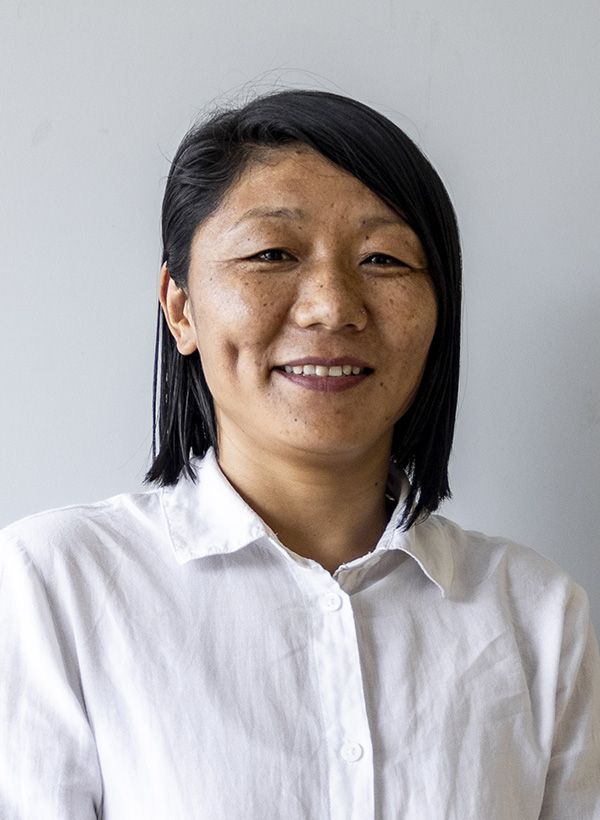
NIRMALA GURUNG 
+977 9801223978
nirmala@thamserku.com
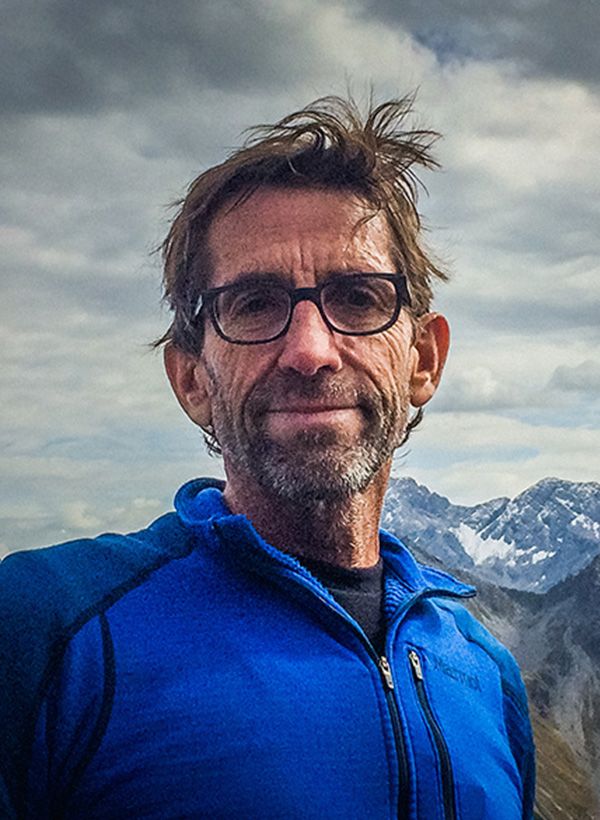
MICHAEL SCHOTT 


+49 174 9755492
m-schott@neumann-grafik.de
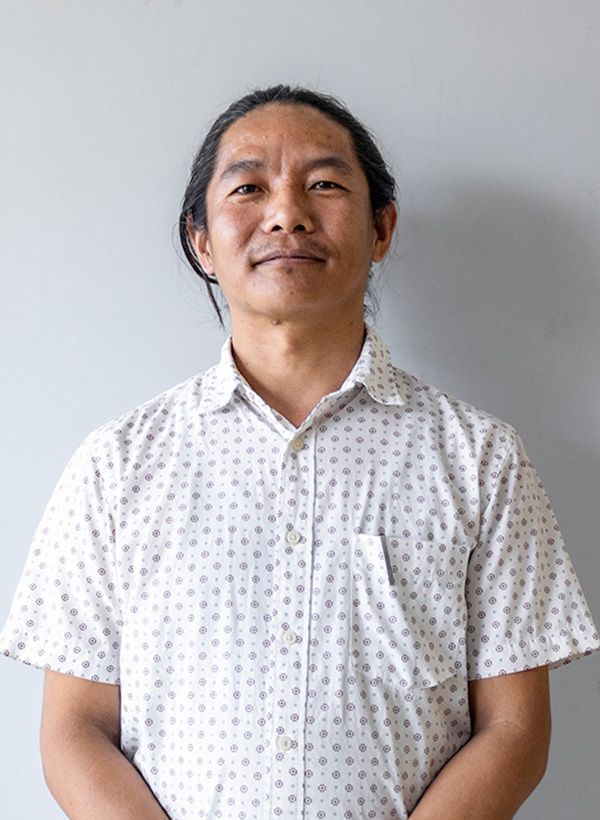
KUMAR RAI 
+977-9801236280
kumar@thamserkutrekking.com
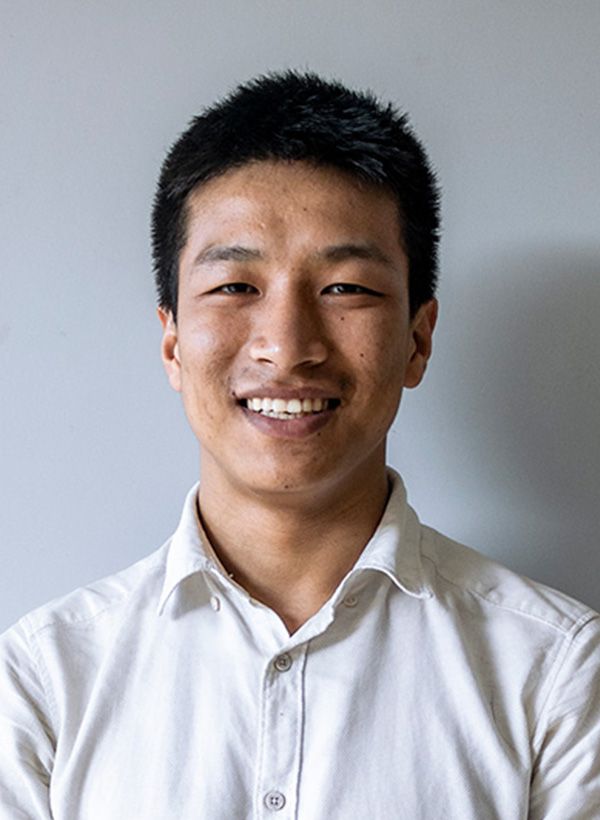
NIMTE SHERPA 
+977-9801223977
info@thamserkutrekking.com
BOOK YOUR TRIP BOOK YOUR TRIP BOOK YOUR TRIP BOOK YOUR TRIP BOOK YOUR TRIP BOOK YOUR TRIP BOOK YOUR TRIP BOOK YOUR TRIP BOOK YOUR TRIP BOOK YOUR TRIP BOOK YOUR TRIP BOOK YOUR TRIP BOOK YOUR TRIP BOOK YOUR TRIP BOOK YOUR TRIP BOOK YOUR TRIP BOOK YOUR TRIP BOOK YOUR TRIP BOOK YOUR TRIP BOOK YOUR TRIP BOOK YOUR TRIP BOOK YOUR TRIP BOOK YOUR TRIP BOOK YOUR TRIP BOOK YOUR TRIP BOOK YOUR TRIP BOOK YOUR TRIP BOOK YOUR TRIP BOOK YOUR TRIP BOOK YOUR TRIP BOOK YOUR TRIP BOOK YOUR TRIP BOOK YOUR TRIP BOOK YOUR TRIP BOOK YOUR TRIP BOOK YOUR TRIP BOOK YOUR TRIP BOOK YOUR TRIP BOOK YOUR TRIP BOOK YOUR TRIP BOOK YOUR TRIP BOOK YOUR TRIP
